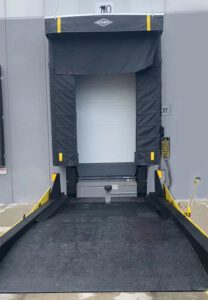Level Ground Excavation involves the use of large, heavy equipment for construction. This site work often includes handling soil remediation to improve soil conditions.
Residential excavation contractors often operate heavy machinery that requires training to maneuver. The key difference between residential and commercial excavation is size.

Residential excavation is an important step in construction and can be a daunting task for home builders. A team of professionals will need to survey the land, test soil conditions, mark utility lines, and learn about the water table on a property before digging can begin. This prep work helps ensure that a home’s foundation is laid correctly and prevents costly mistakes.
Before teams can dig on a site, they must clear the area of debris and dirt. This can include old structures, large rocks or trees, and other materials that are in the way of a new construction project. The size of the site and the type of project will also have an impact on how long it takes for the clearing process to be completed.
Land clearing during excavation is typically done with the use of heavy machinery, including excavating machines like bulldozers. However, hand tools may also be used depending on the project. It is important to make sure the equipment is safely operated by qualified workers.
When you are hiring an excavation company for a residential project, be sure to hire a licensed and insured team. This certification ensures the work will be done in compliance with state and local regulations. In addition, a licensed team will have the skills and experience to handle the specific tasks required for your project.
Once the excavation work is complete, the site will need to be shaped to prepare for building. This can involve removing or adding dirt to the area, creating slopes, swales, and basins for drainage, and other tasks necessary for a quality construction site. This work can be a significant part of the overall cost of a construction project and should be included in any proposal you receive from an excavation company.
Another factor that can increase the cost of a project is the location of the job site. It is usually more expensive to haul equipment to remote sites than it is to bring it to a central location. This will affect the final cost of your residential excavation project.
Residential excavation sites often require compaction of the soil to create a level construction area. This is accomplished by using a variety of mechanical equipment to compact the soil and reduce voids. This process increases the bearing capacity of the soil and can prevent structural damage caused by settlement over time.
The amount of voids in the soil affects its density, which is why it is so important to have compaction done correctly. To accomplish this, an excavator may use vibration, impact, kneading, or pressure. The equipment used depends on the type of soil being compacted – cohesive soils like clay become plastic when wet and hard when dry, while granular soils can be compressed with impact or shear equipment.
Laboratory tests are often used to determine the ideal water content and maximum dry densities for a particular soil. These values are then used as targets for on-site operations. The specific soil characteristics, such as grain-size distributions, shape of the soil grains, and the amount of clay minerals present, also influence maximum dry densities and optimum moisture content.
While the size of a commercial excavation site is much larger than that of a residential one, the needs of an excavator remain the same. The job requires precision and skill to ensure the construction will be solid. It is also necessary to adhere to local and state regulations for materials, construction techniques, plumbing and electrical systems, and even building size.
When evaluating an excavation contractor, make sure they are licensed and insured. This way, if the work is completed without a permit, you won’t be liable. In addition, ask about cleanup services. This will help to ensure the site is neat and tidy when the job is complete.
In addition to lab tests, a simple tool that can be used to check soil compaction is the penetrometer. This device uses a rod with a gauge to measure the penetration resistance of the soil. The higher the pressure required to penetrate the soil, the more compaction is occurring. However, it is important to note that this test only works properly when the soil is moist – pushing the penetrometer into dry soil will increase the resistance and give a false reading.
The foundation of a building is one of the most important aspects of any construction. It is what transfers the weight of a structure to the underlying soil or rock, which helps prevent settlement and structural failures. A well-executed foundation also helps to ensure that a structure can withstand seismic activity and other natural forces. This is why it is essential to choose the right excavation contractor for the job.
The process of preparing the site for foundation placement begins with clearing any obstructions from the area. This can include trees, stumps, and other debris that may be in the way. The contractor may use machines like bulldozers or hand tools to clear the site.
Once the site is cleared, it is often necessary to have it surveyed before the digging can begin. This allows the contractors to determine where exactly on the lot the foundation will be constructed. It is also an opportunity to have the soil tested, which can help to identify any issues that might arise later on in the project.
After the survey, the contractors can then dig down to the desired depth for the foundation. This will usually be based on the type of building that is being built, such as a basement or crawl space. It is also essential to have the foundation be benched, which can help to prevent cave-ins in the future.
While the foundation is being poured, it is important to make sure that the site is prepared for the installation of septic and drainage systems. This is an important step that must be done before the building can actually be inhabited. It is also a good time to put in any perforated pipes that are needed for draining water away from the building site, which can be helpful in damp climates.
The next step is to prepare the site for foundation placement by compacting the area. This can be done manually or with machinery such as a tamper. The contractor should also make sure that the site is leveled, which can be a lengthy process depending on the amount of work that needs to be done. This can also add to the cost, as it requires additional labor and equipment.
Depending on the project, the backfilling might involve native soils or a mixture of materials. Backfill is placed on top of the excavation layers, and compacted with hand tampers or plate or roller compactors. A variety of backfill materials are used, including sand, crushed stone, or recycled concrete. In some cases, commercial by-products like fly ash or furnace slag are utilized as well. It all depends on the structural needs of the job and site constraints.
Residential excavators often work with builders on building construction projects. As you may imagine, commercial buildings are governed by a much larger set of rules and regulations than residential structures. This is especially true when it comes to construction materials, building techniques, plumbing and electrical systems, and size. It is important for excavators to adhere to both local and federal standards when working on commercial excavation jobs.
Backfilling is an important part of the excavation process. It helps to protect foundations from damage and reinforces ground-bearing slabs and other groundwork. The backfill material will typically be a combination of the excavated soil and imported materials based on the structural requirements established during ground investigations.
Once the backfilling is complete, it will be tamped down using hand or power tampers and rollers. The material should also be graded to ensure a proper drainage system is in place for the structure.
The backfilling and compaction process is crucial for ensuring that the foundation and other groundwork on a residential property are strong and stable. It is also important for contractors to carefully check for any potential damages caused by heavy equipment during the backfilling process. It is best to avoid driving a bulldozer in parallel with the foundation trench to prevent the risk of structural damage. Conducting regular site inspections during the backfilling and compaction processes is a good way to keep track of the quality of the backfill material. This will help identify any issues that might occur and allow them to take the necessary corrective measures in a timely manner. This will save valuable time and money in the long run.



